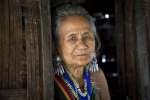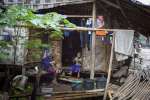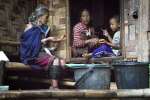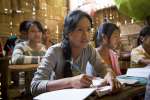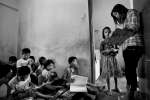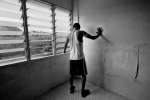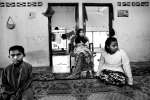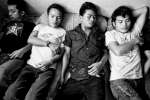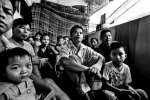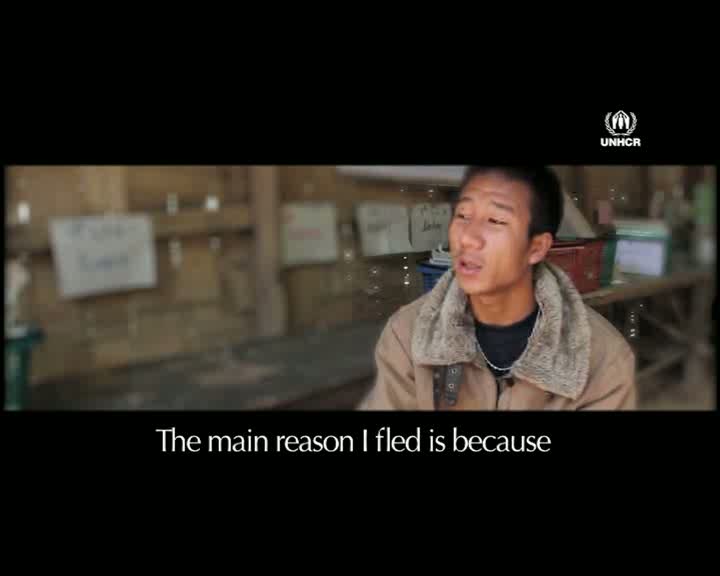More people risk Indian Ocean voyages despite abuse, deterrence
News Stories, 5 December 2014
GENEVA, December 5 (UNHCR) – A new UNHCR report released on Friday has found that more people are risking their lives on smugglers' boats in South-East Asia despite the prospect of violence en route.
The refugee agency estimates that 54,000 people have undertaken irregular maritime journeys in the region so far this year, based on reports by local sources, media and survivors. This includes some 53,000 people leaving from the Bay of Bengal towards Thailand and Malaysia, and hundreds of others moving further south in the Indian Ocean.
The outflow from the Bay of Bengal tends to peak in October, when calmer waters follow the end of the rainy season. Departures this October surged more than in previous years. Some 21,000 Rohingya and Bangladeshis have set sail since then, a 37-per cent increase over the same period last year. About 10 per cent are believed to be women. Roughly a third of arrivals interviewed by UNHCR in Thailand and Malaysia were minors under 18 years of age. Children as young as eight years old are known to have made the journey alone.
In total some 120,000 people are believed to have embarked on these voyages in the Bay of Bengal since the start of 2012. With payments ranging from US$1,600 to US$2,400 demanded for each passenger, smugglers plying this route are believed to have generated nearly US$250 million in revenue in the last three years. While the majority of people paid smugglers for the journey, there were isolated accounts of people who said they were forced onto boats, sometimes at gunpoint, in Myanmar and Bangladesh.
Conditions on the smugglers' boats were dire. Survivors consistently described overcrowded conditions and daily rations of one sparse meal and one to two cups of water. People who asked for more or tried to use the toilet out of turn were beaten or kicked down ladders by the armed crew on the deck above. An estimated 540 people have reportedly died this year at sea from such beatings, starvation or dehydration, and their bodies thrown overboard.
In Thailand, survivors told UNHCR staff that they were ferried from the big boats on smaller boats to the mainland. There they were held in smugglers' camps and made to call relatives to pay for their release. When payment was not immediate, they were beaten or subjected to other acts of torture.
Since last year, hundreds of people are alleged to have died in the camps from illness, starvation, dehydration and killings by smugglers when they tried to escape or could not pay.
According to survivor accounts, raids by law enforcement agencies in Thailand since the beginning of the year seem to have led to a marked reduction in the number and size of smugglers' camps in the country. Some of the survivors UNHCR interviewed had gone through the camps more than once. They were rescued in government raids, placed in immigration detention, then opted for deportation or escaped and re-entered the smuggling cycle to escape the prospect of indefinite detention.
Rohingya and Bangladeshis who arrived in Thailand in recent months have been systematically screened by government teams to assess the potential for human trafficking. If found to be victims of trafficking, they are transferred to shelters to facilitate their rehabilitation and investigations of suspected smugglers. UNHCR hopes that this screening can be expanded to an assessment of all international protection needs.
Most arrivals in Malaysia crossed by land from Thailand and were kept in holding houses in northern Malaysia, usually for a few days. UNHCR staff met a teenage girl who married a Rohingya man after he paid for her and her brother's release from a holding house.
As a result of the abuse and deprivations they suffered on smugglers' boats and camps, this year nearly 200 people approached UNHCR in Malaysia with beri beri disease, a form of Vitamin B1 deficiency that left them unable to walk.
Several boats arrived directly in Malaysia from the Bay of Bengal this year. Nearly 300 people who arrived on three boats were arrested. UNHCR has been able to access people from the first two boats and is seeking access to the third group. Yet others arrived by boat undetected and are living in the community.
Two-way boat traffic continued between Indonesia and Malaysia, with some Rohingya moving to Indonesia after spending some time in Malaysia. More than 100 Rohingya were registered with UNHCR in Indonesia this year.
UNHCR staff spoke to some Rohingya who tried to sail onward to Australia but returned due to bad weather, engine failure or interception by Australian authorities.
This year to date, there were 10 known interceptions of boats carrying 441 people hoping to reach Australia. Seven boats with 205 people were returned to Indonesia. All but one of 79 passengers on two boats were returned to Sri Lanka. Separately 157 people on a boat from India were transferred from the Australian mainland to an offshore processing centre in Nauru, where they remain detained.
Of the more than 6,500 people of concern to UNHCR who travelled by sea and were put in detention in the region, more than 4,600 were held in Australia or the offshore processing centres in Nauru and Papua New Guinea.







